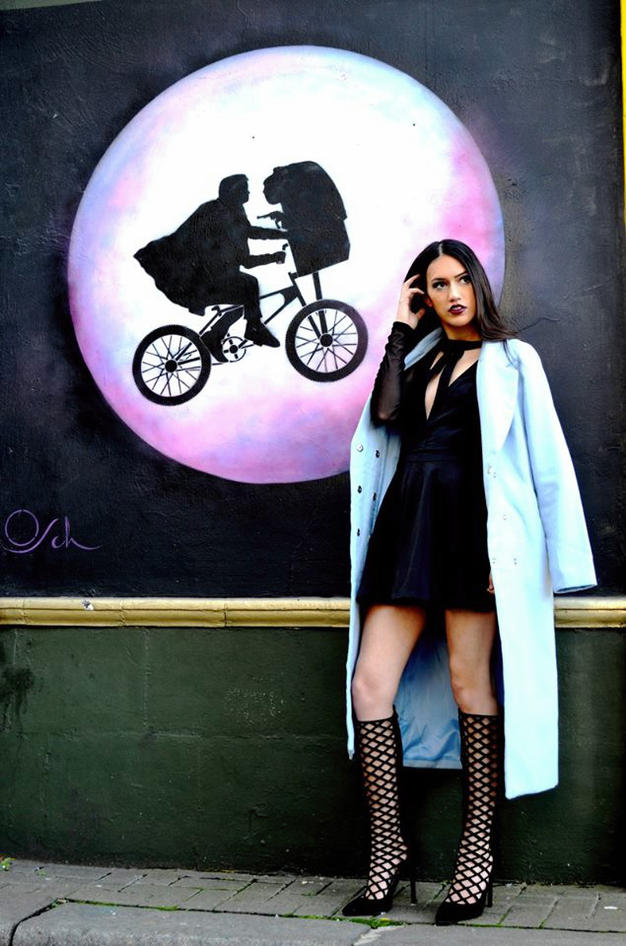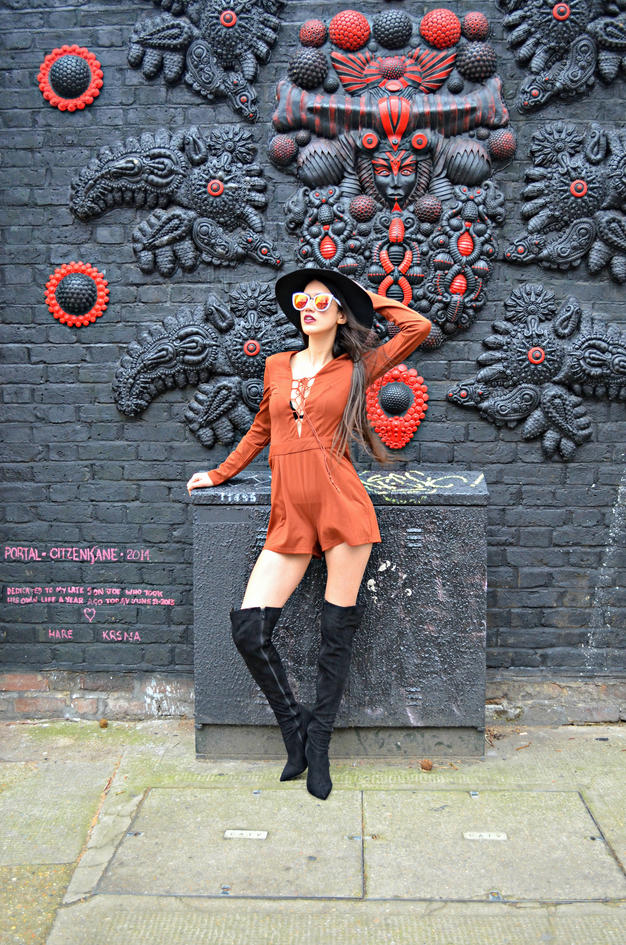One quick flick through my blog and it’s clear that I am crazy about street art. There is something so enticingly innocent about scrawling through images of portraiture and landscapes yet when it comes to a street art tour, darker and more sinister themes of ‘capitalism’, ‘consumerism’ and ‘crime’ are etched in the most unsuspecting places. The origins of street art was brought about by political change in Brooklyn, New York in the 80’s before a similar movement as a reaction to ‘political change’ occurred in the late 1980’s, with street artists like Ben Eine being original advocates of the street art movement.
Global Street Art originated as an art form that was meant to ‘provoke’ subversive reactions against artistry and redefine the very definition of ‘art’. At the time there was no clear distinction between ‘ graffiti’ and ‘street art’ and the two art forms were touted as ‘illegal’ examples of vandalism, frowned upon during the early 80’s to 90’s. Yet twenty years later street art is a very much accepted part of London’s scene with notable hot spots Shoreditch and Hoxton having birthed some of the notable artists ‘greats’ i.e Ben Eine . The popularity of street art has doubled in the noughties and continues to grow in prevalence during modern times. Street art tours are selling out in high demand, while prices inflate to keep up with the legions of tourists and even local citizens who are fascinated with ‘street art culture’, which led me to jump with joy when I was offered the chance to review ‘Planet Pass’s infamously intensive street art tour.

The Disneyfication Of Hollywood By Otto Schade
Me and Anna Maria ( On The Edge Blog) headed off on our adventure to meet our tour guide ‘Fred’, an Italian personal trainer, tour guide and radio host, whose passion for street art and leading a street art tour was evident at first sight. We began our journey in Bishopsgate, outside Liverpool Street Station where ‘Fred’ spoke about the Scottish Artist Bruce Mclean, whose specially commissioned dragons marked the border between the ‘City of London’ and The Tower Hamlets, creating a stark contrast between austerity and ‘deprivation’ and marking the distinction between working class and middle or upper class culture. The dragons were made using recycled materials and were believed to be protectors of ‘silver and gold’ protecting the cities loot and buying into the ‘Yuppies’ vision of consumerism. Although not street art per say, the sculpture was a technique later used by many street artists including Citizen Kane, who used sculptures to represent specific emotions, rites of passage or evoke a reaction towards the politicization of the street art scene.
In contrast the dragon was by comparison a representation of ‘wealth’ and prosperity whereas the murals, sculptures and graffiti that adorned derelict buildings in the dead of night were painted by artists who were quite often poor and in the case of ‘Stik’ homeless for many years. By the millennia, street art was gradually being integrated into mainstream culture and artists like Chilean artist and architect Otto Schade helped propagate or at least usher in a new era of ‘street art’ where it became legal to adorn walls, particularly in East London. As we headed down Great Eastern Street on our street art tour, we came across my favourite Otto Schade stencil painting and arguably his most iconic art piece stood before us; a depiction of ET and his human. Except this was no friendly extra-terrestrial being for ET was holding a gun pointed towards the child’s head, critiquing the ‘Disneyfication’ of Hollywood. The process of Disneyfication has entrapped us in a consumerist, almost surrealist lifestyle, oblivious to the anguished cries of those who live outside Hollywood’s ‘perfect’ bubble. It was a thought provoking commentary on ‘class divide’ and media insensibility and made me question the world around me. The brilliance of Otto Schade is in my opinion unparalleled and I was even more impressed when I found out that our tour guide was friends with the painter/artist on Facebook!

Citizen Kane and his mural ‘Portal’, a tribute to his son who committed suicide.
Great Eastern Street has always been one of my favourite prime shooting locations for my blog but sadly due to construction work at least 95% of the street art murals and sculptures had been knocked down. Still we were not to be deterred and ‘Fred’ told us how Great Eastern Street’s infamous use of ‘disused’ Jubilee trains had led to tourists flocking to the street to capture its almost surreal beauty. The trains overlook the now empty streets, painted in a caricature of humanity, monochromatic for the most part with the odd pop of red here and there. It was odd because beneath the trains lay a slogan titled ‘ Let’s Adore and Endure’ ( Created by Espo) and I wondered what relevance or cultural association it might have in common with the abandoned or disused trains and then it occurred to me; like the abandonment of the two trains who had become ‘street watchers’ humans had abandoned principalities and no longer sought to be ‘entirely’ civil with fellow colleagues, friends and acquaintances.
You will find that in London the ‘Yuppies’ march forward almost robotically in their steam pressed suits, looking past everyone, as though they could hardly bare to ‘endure’ let alone adore their fellow strangers. Like the slogan says we must embrace our multicultural nation and relinquish the notion that Brexit gives us the ‘excuse’ to be rude or show ill favor towards those who dare to think outside of ‘our own bubble’.It may have been one singular sentence but it was a very powerful message all the same. Perhaps the most infamous ‘political’ street artist is the 80’s street art aficionado Ben Eine who as aforementioned was arrested twice and prosecuted fifteen times for illegally decorating public property with stenciled words such as ‘change’ before coming full circle in 2010 when he was commissioned by the government to decorate Curtain Street. With a background in typography Ben Eine’s works have passed hands between David Cameron and Barack Obama. both said to be fans of his typographic work, creating a marked difference to all the murals and sculptures that usually mark ‘street art culture’.
Yet nevertheless it is murals that remain the most iconic ‘face’ of street art culture, although quite often art does not use faces but surreal inscriptions or portraits of modern realities, influenced by cubism and surrealism, two art periods that I am a fan of myself. So it was ironic that Noir the godfather of ‘alternate street art’ popped up a hell of a lot on our street art tour. The French artist is famed for his minimalist portraits where indigenous characters appear to be almost totemic in appearance, drawing inspiration from Primitivism, a Twentieth Century Western Art Movement. Primivitism tends to borrow ‘visual forms’ from non Western cultures ( thus the totem figurines) and Noir’s work clearly reflects this transgressive art movement. But totems were not the only source of inspiration; as an artist who was no stranger to controversy after being the first artist to decorate the Berlin Wall, two musical icons David Bowie and Iggy Pop heavily influenced Noir’s work in more ways than one. The musical chameleon’s ‘new age music’ (which was considered to be subversive at the time), encouraged Noir to put his ‘street art stamp’ on the Berlin Wall, especially since David Bowie was recording in Berlin whereas Iggy’s bold liberationist intent can be seen in each ‘childlike image’.But the street art tour was not over yet. Oh no, our story has just began.
Join me next time for Part II, featuring artists such as Dan Kitchener, Kai, Banksy and Stik.

One Of My Favourite Murals Has Been Knocked Down By Construction Work
What are your thoughts on street art and its relation to its political landscape?
If you love street art, you would definitely love wynwood in Miami Florida. Art Basel is held there every year, and the art that’s there year round is amazing. If you’re ever lacking in inspiration, check out images of wynwood.